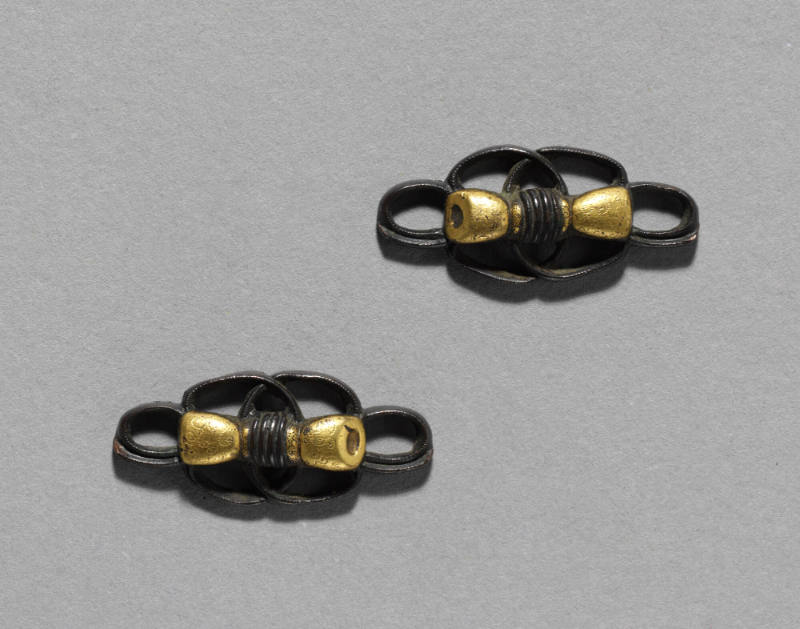

Object Details
Culture
Japan
Date
Edo period, 19th century
Medium
Shakudo with copper and silver inlay
Dimensions
1/4 × 1 3/8 × 3/4 inches (0.6 × 3.5 × 1.9 cm)
Credit Line
Memorial gift from the Estate of Charles W. Hay, Class of 1925
Object
Number
73.005.096
BRIEF DESCRIPTIONThis is one of a set of matching samurai sword fittings.WHERE WAS IT MADE?These swo(…)
BRIEF DESCRIPTIONThis is one of a set of matching samurai sword fittings.WHERE WAS IT MADE?These sword fittings were made in Japan during the Edo period (1615-1868).HOW WAS IT MADE?These items were handcrafted from a material known as shakudo, a copper-based alloy containing small amounts of gold and silver that can be polished to a deep shiny blue or blue-black. Fine designs made from other metals have been set, or inlaid, into the shakudo, while other designs were directly engraved into the surface.HOW WAS IT USED?In most cases the fuchi and kashira form a pair, each made of metal and sharing a design. The kashira is placed at the base of the sword hilt. Traditionally, when the hilt of the sword is braided, the braid passes through the braid slot in the kashira to secure it from moving. The kashira both protects the braid from fraying and strengthens the hilt. The fuchi is placed at the other end of the hilt, and helps to tighten the hilt around the blade, preventing looseness and rattling.WHY DOES IT LOOK LIKE THIS?During the peaceful Edo period, sword fittings were seldom created for swords that were to be used in battle. Instead, these small fittings became a medium for artistic work, appreciated for their exquisite workmanship, variety of designs, and refined beauty. Whereas until around the 1650s, only a small number of motifs were typically used to decorate the sword fittings, in the following years of the Edo period the artists who made these fittings took inspiration from images in books, characters in folktales, and other popular cultural and natural motifs. Swords and their fittings served as status items for samurai. A sword owner would select motifs that expressed his tastes, values and interests. This particular set features a depiction of a famous historical Chinese general, known as Kwanyu (Guan Yu in China), who played a key role in a civil war in China that led to the collapse of the Han dynasty during the first two decades of the 3rd century. The story of his life has been fictionalized over the years, and he has been elevated to the status of Emperor, saint, or deity in different eras and by various faiths. Notice Kwan Yu’s long black beard and reddish face. He is also holding a weapon called a kwan dao, with which he is associated. These attributes are all identifying features of this legendary figure.












